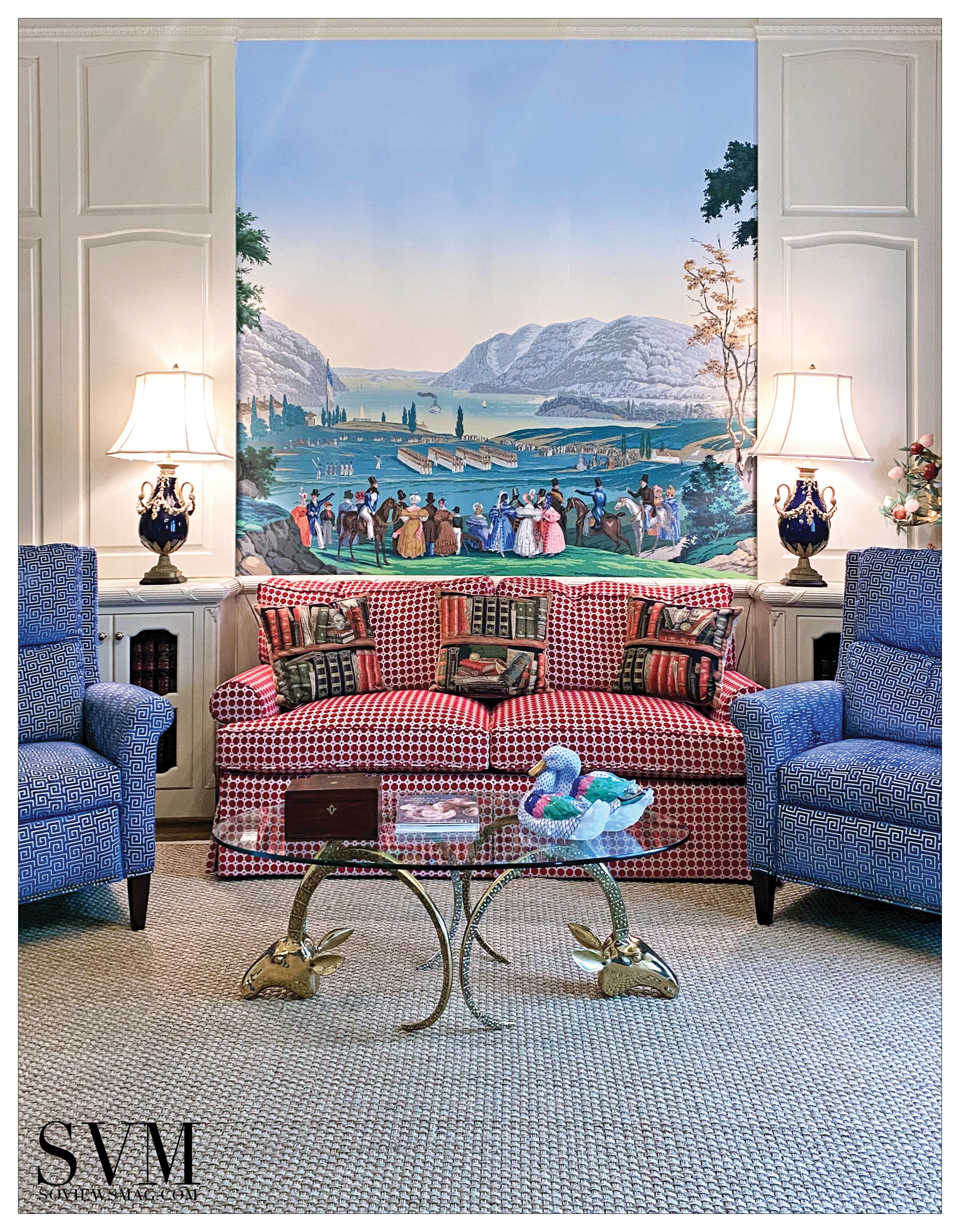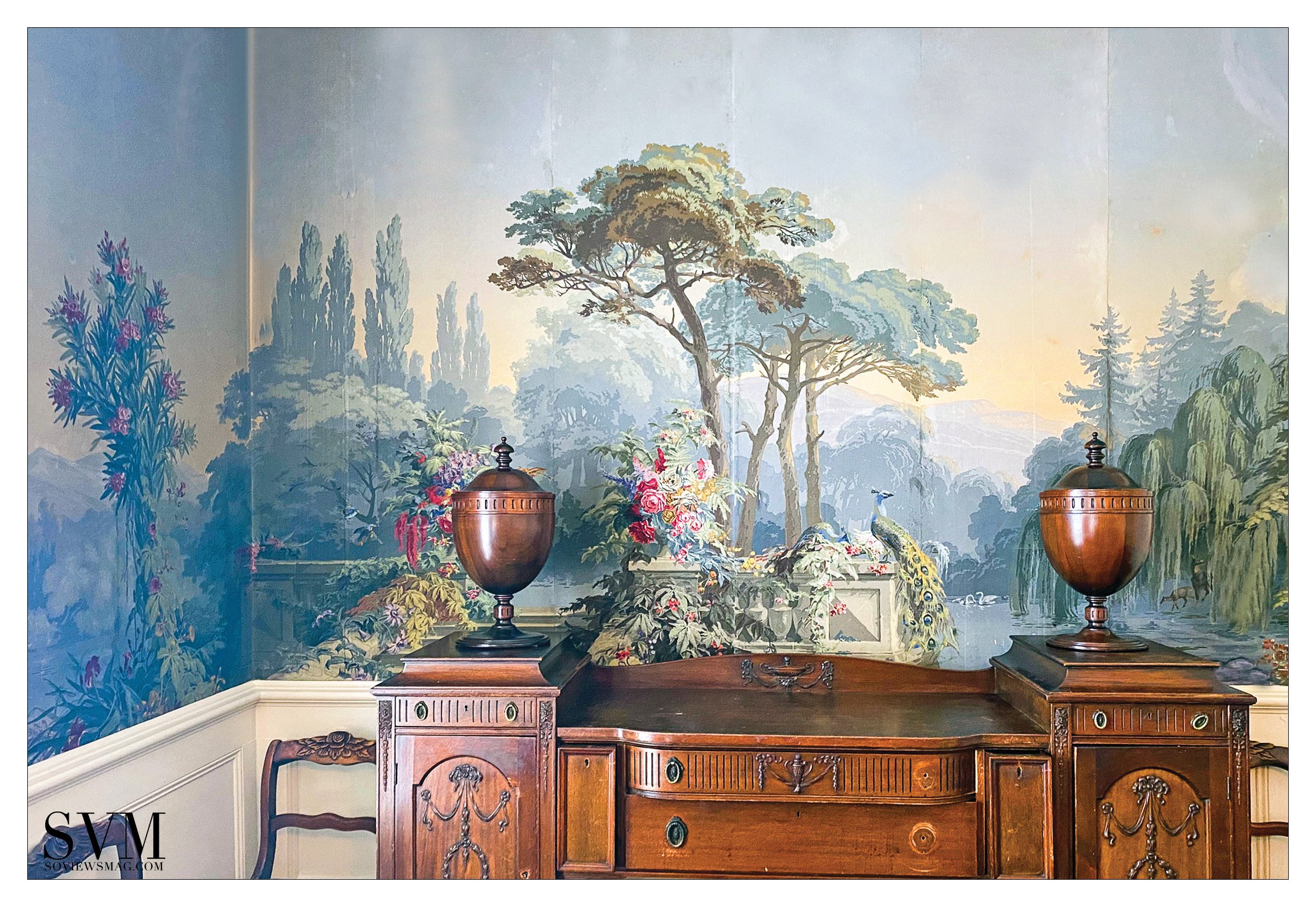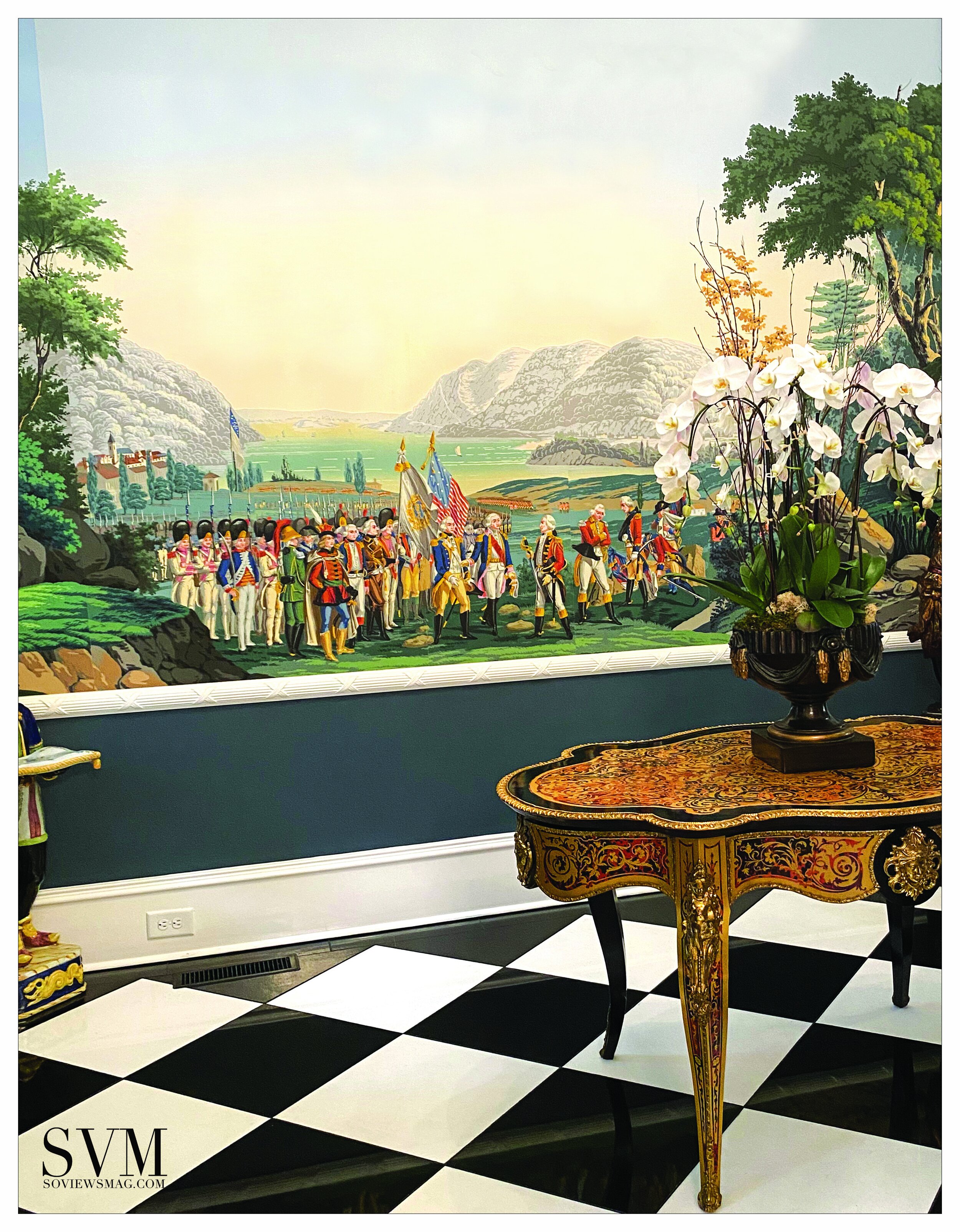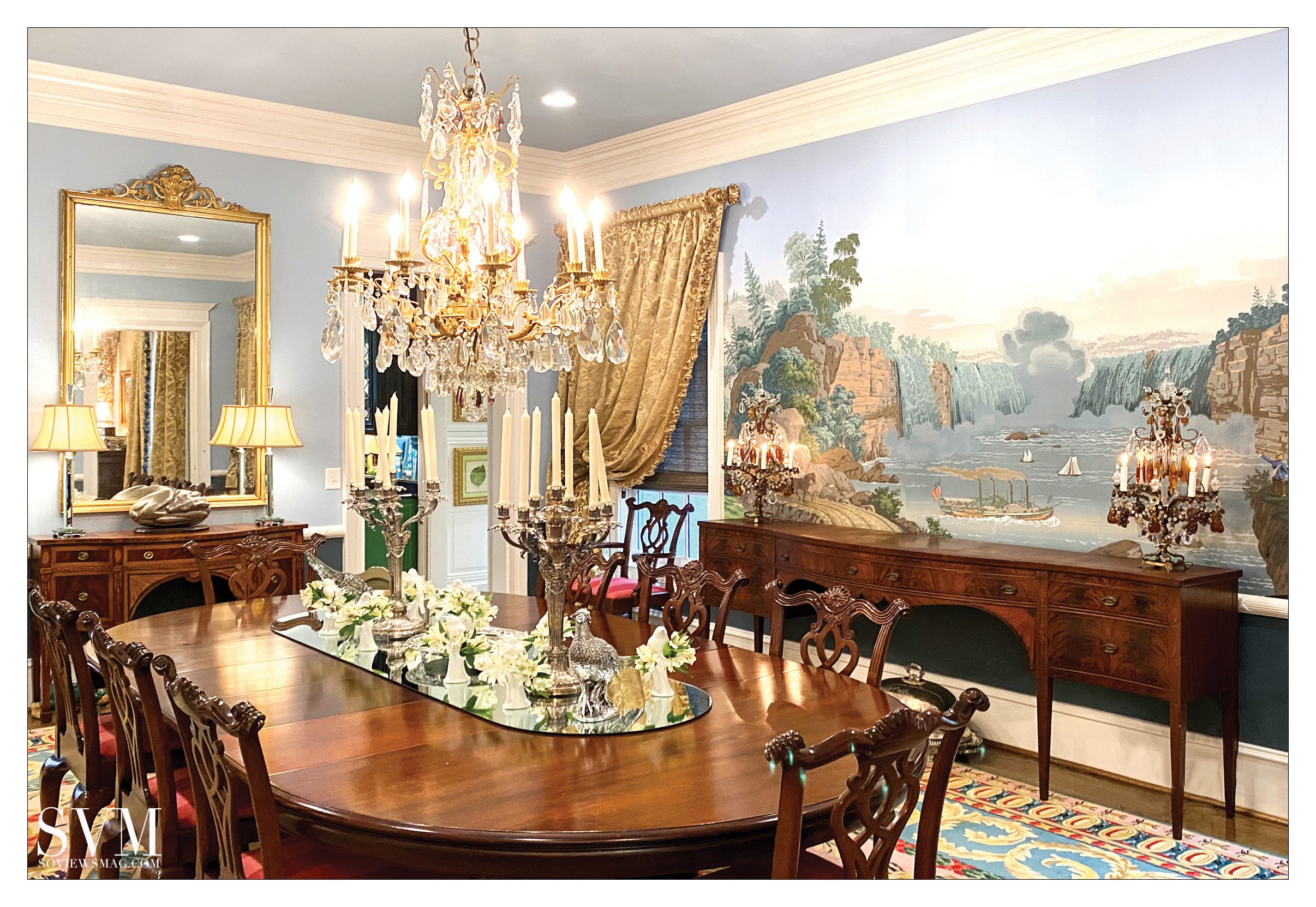ZUBER WALLPAPER
Founded in 1797 by Jean Zuber, each Zuber & Cie wallpaper panel is still produced entirely by hand using the original hand-carved woodblocks. Columbus is no stranger to these panoramic wallpapers. Homes such as the Wynn House and other private residences feature these treasured works of art.
By Marla Caligaris - Photography by Sammy Saxon
Founded in 1797 by Jean Zuber, each Zuber & Cie wallpaper panel is still produced entirely by hand using the original hand-carved woodblocks. Headquartered in Rixheim, France, Zuber received the Legion of Honor by King Louis Philippe in 1834, and the company continues to be celebrated today for its treasured works of art.
The French have manufactured several types of wallpaper over the centuries, though their nineteenth-century handcrafted scenic landscape papers are arguably the most spectacular. This unique wallpaper created a breathtaking panoramic experience with all the walls in a room covered with non-repeating scenes. These mural-like papers transformed rooms, providing the opportunity for viewers to be swept away to an exotic place or immersed in an exciting period in history. Scenic papers enjoyed a golden era in both Europe and North America from the first decade of the 1800s until the 1860s, though they remained in print well after this period. Zuber et Cie is the only remaining firm that fabricates these papers today.
Jean Zuber (1773–1852) began working as a sales representative for a wallpaper firm at the age of seventeen in Mulhouse, France, before relocating the company to Rixheim, France, in 1797. By 1802, Zuber had become its sole owner, naming the firm Zuber et Cie. Zuber soon began producing panoramic papers and quickly gained prominence for his meticulous attention to detail and exquisite colors and designs. He worked closely with artists who generated full-scale panoramic compositions, which served as models for the hand-carved printing blocks. It requires anywhere from over one hundred to several thousand blocks to create a scenic paper set. Zuber et Cie’s artisans craft beautiful skies, which they carefully paint with large brushes before the rest of the imagery is block-printed by hand onto finely made paper.
From 1804 to 1860, Jean Zuber and his successors offered twenty-five different scenic papers beginning with Les Vues de Suisse (1804). Designed by Pierre-Antoine Mongin (1761–1827), it depicts many famous tourist attractions in Switzerland. Mongin also designed L’Hindoustan (1807), which paints an exotic picture of India in vivid colors. Years later, Les Lointains (1825) offered viewers a romantic, classical composition in grisaille featuring architectural elements dotting a tranquil garden, followed by Décor Chinois (1832), which depicts a vibrant botanical Chinese landscape.
J ean Zuber was also involved in the development of machine printing in the early nineteenth century, receiving a patent for the process of printing using engraved brass cylinders in 1826. Zuber turned over the factory to his sons in 1835, who went on to create at least twenty-three scenic wallpapers during the nineteenth century. The factory also produced collections of repeating patterns, borders, ceiling rosettes, and architectural trompe l'oeil. During the 1840s and ’50s, Zuber & Cie emphasized indigenous flora and fauna in several panoramic papers. One of the most enchanting, Eldorado, first offered in 1849, features lush vegetation and showcases the continents of Africa, Asia,
For its production, Zuber & Cie uses woodblocks (more than 100,000) engraved from the 17th to 19th centuries. During the presidency of John F. Kennedy, First Lady Jacqueline Kennedy on recommendation of historian Henry Francis du Pont had an antique copy of the panoramic wallpaper Vues d'Amérique du Nord, (designed in 1843) installed in the Diplomatic Reception Room of the White House. The wallpaper had been on the walls of a parlor in the Federal period Jones House in Maryland until 1961 when the house was demolished for a grocery store. Just before the demolition, the wallpaper was salvaged and sold to the White House.
Zuber & Cie wallpaper is so treasured and expensive that there are stories of homeowners removing the historic wall panels before they sell their property. Recently on ebay, Zuber & Cie panels ranged in price from $5,000.00 to $31,000.00 per panel.
Zuber possesses over 150,000 hand-carved woodblocks, which were made between 1797 and 1830, when the company employed 50 in-house woodcarvers, and each is classified as a national treasure. Once a block is worn out it is retired, along with its design, as the materials and expertise needed to recreate it is prohibitively expensive.
Zuber & Cie’s magnificent panoramic wallpapers continue to captivate present-day patrons. The firm uses the original antique printing blocks, which the French Ministry of Culture has designated as Historical Monuments. Over 150,000 woodblocks are stored in the factory’s vaulted cellars. This exhibition presents a complete set of Views of North America as well as individual lengths from L’Hindoustan, Eldorado, Les Lointains, and Décor Chinois.
Southern Views Magazine- All Rights Reserved ©







